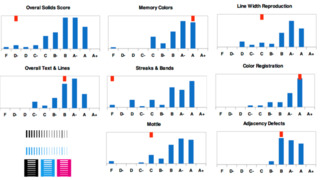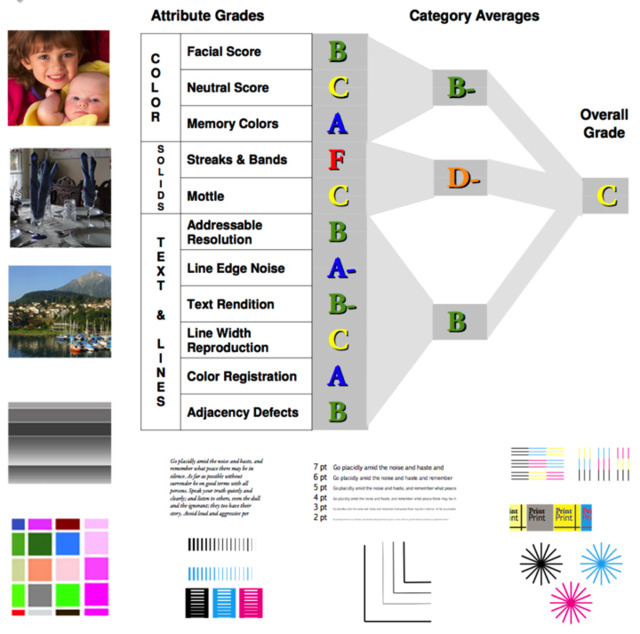Production Printing Presses: How Do You Compare Them?
Today we have many different print technologies available, including a variety of offset, electrophotographic and inkjet presses from many different manufacturers using a variety of unique manufacturing and design techniques.

 ©Technology Watch LLCToday we have many different print technologies available, including a variety of offset, electrophotographic and inkjet presses from many different manufacturers using a variety of unique manufacturing and design techniques. Additionally, all of these at a minimum have a DFE which controls the file processing prior to print. They all have the potential to be used to produce commercial print, labels, packaging and industrial printing. So how do you determine that the press you are using or about to purchase is up to the challenge? And how do you compare it to other similar and even different presses?
©Technology Watch LLCToday we have many different print technologies available, including a variety of offset, electrophotographic and inkjet presses from many different manufacturers using a variety of unique manufacturing and design techniques. Additionally, all of these at a minimum have a DFE which controls the file processing prior to print. They all have the potential to be used to produce commercial print, labels, packaging and industrial printing. So how do you determine that the press you are using or about to purchase is up to the challenge? And how do you compare it to other similar and even different presses?
Comparing identical or different production presses has always been a bit of a challenge. There is available imaging science to determine imaging resolution, color reproduction and gamut, etc., but ultimately meeting a client’s reproduction expectations is usually based around a visual interpretation of the final results. So how can you create a set of tools and a process that can capture both the measurable science and the intrinsic visual interpretation that could provide a standardized method of comparison?
How about using a “Network Mediated Peer Group”? This concept has been developed and proven by a group of imaging experts and is now used by many press manufacturers and print service providers to ensure their equipment is operating at an optimal state. It was developed by Image Test Labs (ITL), a division of Technology Watch LLC, and offers a solution for comparing similar and different presses and press technologies. The experts who developed this process are Henry Freedman, inventor and founder of Technology Watch, covering print and imaging technologies for over 38 years, along with Dr. Peter Dundas and Dr. Peter Crean, each with about four decades of color and engineering experience at Xerox.
This new process was built on top of years of “image grading” efforts by ITL. It started with a set of printable test targets along with more than 600 hours of live printing plant testing on offset, toner, inkjet, wide-format and proofing systems. From that starting point, they have been able to create a reasonably-priced service that can compare presses against the results of others in their database, which is the “largest graded printed image database” in the world. Last year, they had the results of more than 300 presses added to the database. The information collected in their database is kept confidential.
As they developed the service, the goal was to make the results easy to deploy and easy to understand. They use a set of PDF pages that can be run on any press. The resultant prints are “dissected” into about two dozen different attributes that act as independent measures of how a customer could perceive the printed results. Then the ITL Image Grader assigns a category and overall grades based on the importance of the attribute, using a patent-pending process that mimics customer perception, giving greater import to a low score than to higher scores in related attributes.
 ©Technology Watch LLC
©Technology Watch LLC
The main categories for scoring are color, solids, lines and text. Unlike standard measurement tool results that report numeric values like microns, delta-E, etc., this process uses a grading system delivered as an academic style “report card.” While instrument measurements are accurate, assuming a good device with calibration, research has found that the human eye can tolerate color mismatch differently based on the color itself. Customers can also tolerate certain print technology attributes, since they usually view their printing not under a loupe but in the context of the final use. Therefore, it is important to take this into account in any measurement system that is developed to mimic customer expectation. We covered this concept in a previous article on ChromaChecker.
In order to offer a true measurement of the press, the ITL system also avoids attributes like gloss, texture and gamut, which are application-specific and under the printer’s control with ink, paper selection and post treatment, as well.
Finally, the evaluation and grading were developed to be press technology-agnostic, allowing for equitable comparison of different printing technologies. The report card, which consists of five pages, shows the results of 11 attributes and about a dozen sub-attributes in 15 different grades, highlighting strengths and weaknesses. It is broken down into the evaluation of your press, a comparison of your press to other similar presses and comparison to all presses in the database. Red indicates your press results in comparison.
Equipment manufacturers including Fujifilm, Konica Minolta, Xerox and many others use this to benchmark their presses. Print service providers use this as one of the criteria for testing equipment prior to product release or acquisition, as well as to align existing equipment. To date, about two-thirds of those tested are EP presses and one-third are inkjet. It has also been found useful in helping diagnose and communicate machine issues, although it was not really developed for that purpose. As we continue to see the growth of digital print technologies and hybrid print solution adoption, having a standardized way to compare print results is increasingly important. Considering that presses are priced from thousands to millions of dollars, this type of testing for hundreds of dollars can be easily justified.
More to Come…
I would like to address your interests and concerns in future articles as it relates to the manufacturing of print, packaging and labels, and how, if at all, it drives future workflows including “Industry 4.0.” If you have any interesting examples of hybrid and bespoke manufacturing, I am very anxious to hear about them. Please feel free to contact me at [email protected] with any questions, suggestions or examples of interesting applications.

